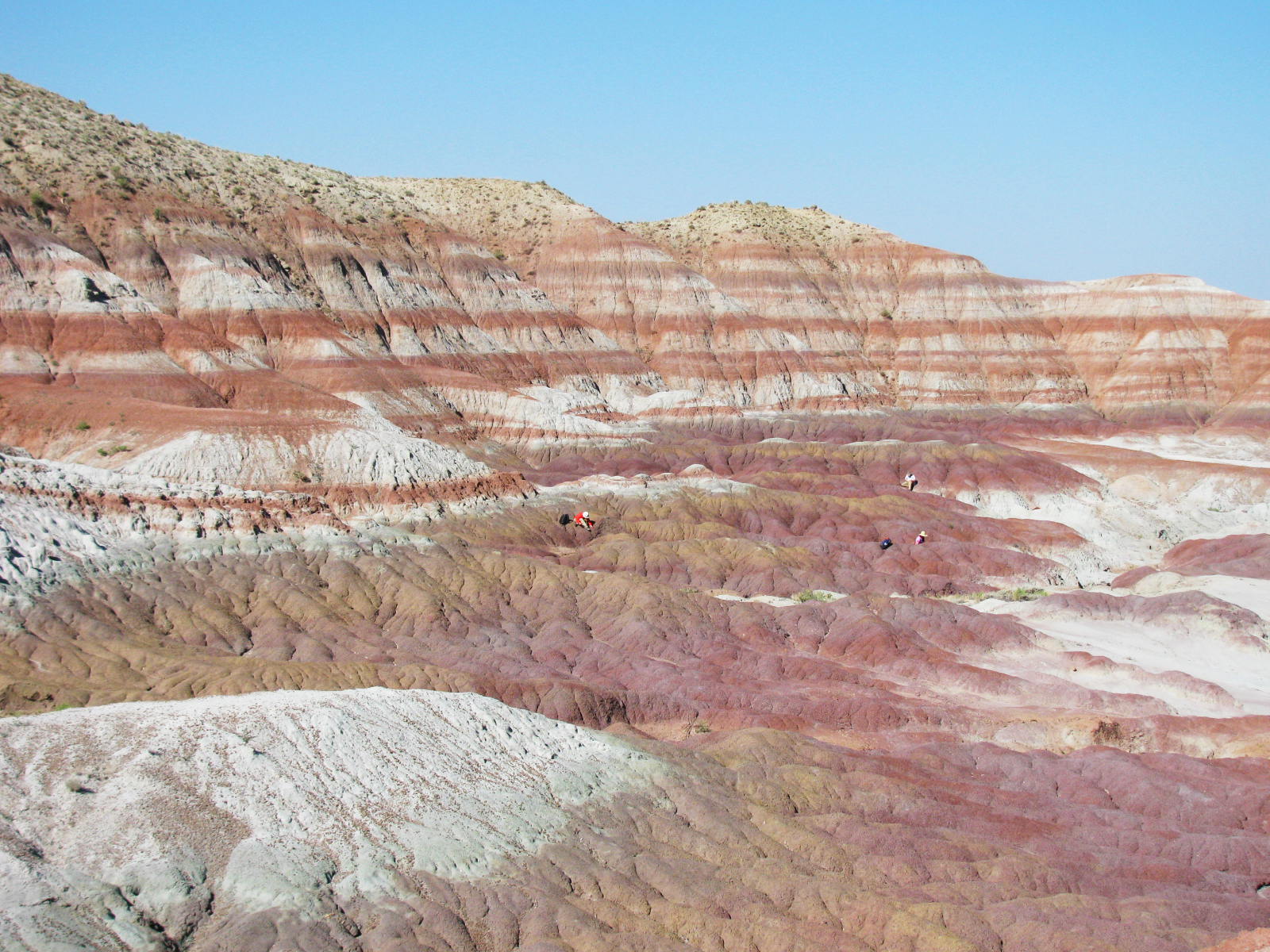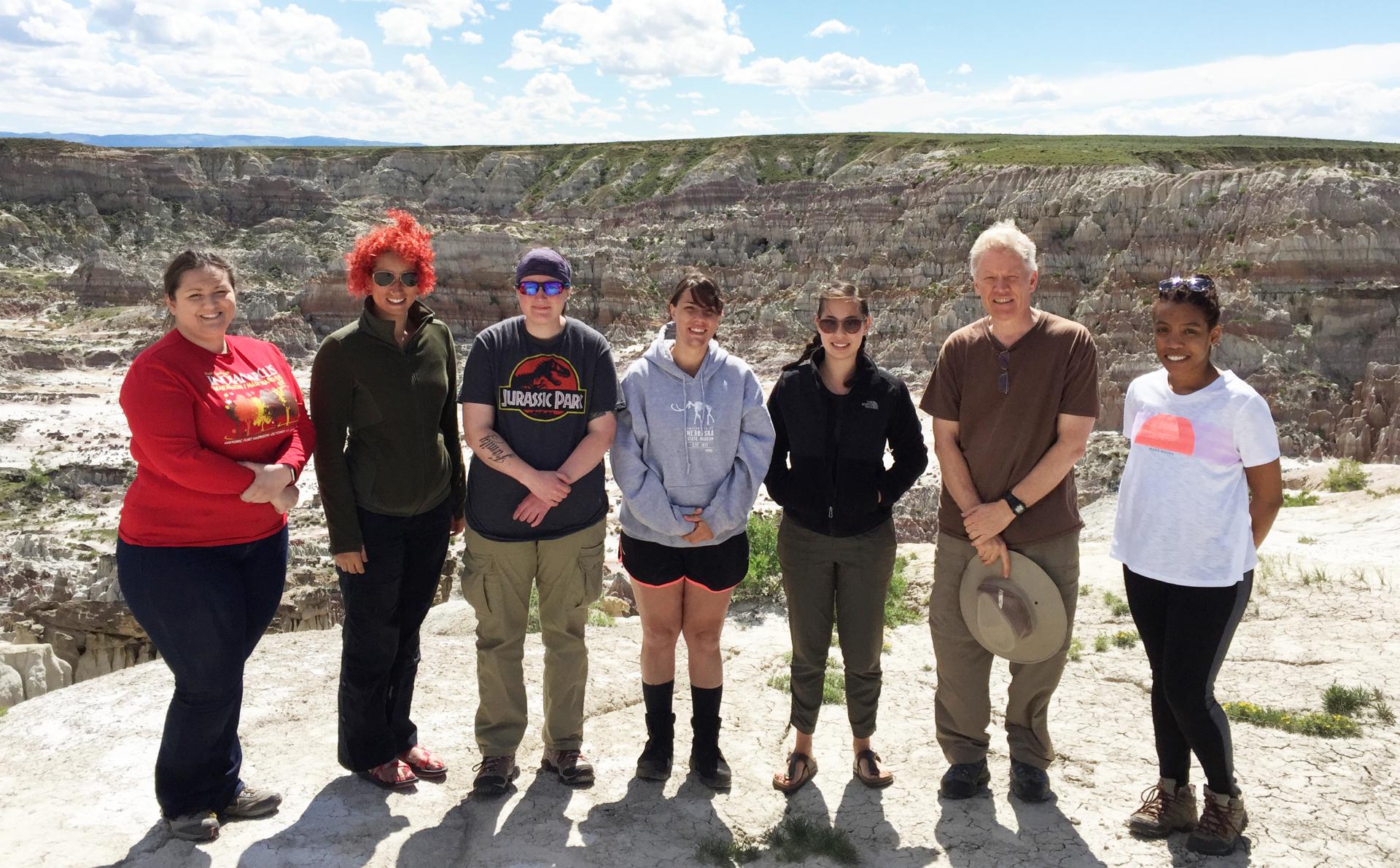Sedimentary Geology
The Sedimentary Geology program features graduate research and education on all aspects of the sedimentary record. Our students work on problems in sedimentology and stratigraphy, sedimentary geochemistry, and paleoclimate. Research projects take our students and faculty all over the world, from right here in Nebraska, to the western US, Antarctica, and more.
A number of courses in sedimentary geology are taught on a regular basis. A major highlight of our program is the Schramm Course, which provides students with opportunities to take short courses from industry experts and to on field trips to classic geological localities such as the Bahamas, Book Cliffs, southern England, and the Great Barrier Reef.

Photo of students collecting fossils at the type section for the Lost Cabin Member of the Wind River Formation (photo from Ross Secord)
Research
Optically Stimulated Luminescence dating of sands.
Richard Kettler uses instrumentation in the Optically Stimulated Luminescence Laboratory to determine the burial age of sand grains in a wide-range of eolian, beach, fluvial and glacio-fluvial deposits.
Geochemistry of iron, carbon, sulfur, and organic molecules.
Richard Kettler and his students examine the geochemistry of iron, carbon, sulfur, and organic molecules to explore such diverse topics as the biogeochemistry of thermoacidophilic microbes, the chemistry of meteorite parent bodies, and the origin of life. Other efforts involve examining the Fe-C-S chemistry of rocks to investigate how factors like diagenesis and ocean chemistry control the distribution of ore deposits.
Sedimentology, stratigraphy, surficial processes and landscape evolution.
Matt Joeckel and his students examine the stratigraphy, sedimentology, and geochemistry of Paleozoic and Mesozoic strata to ascertain long-term changes in climate and environment in the central US. Paleosols provide a particular focus of study. Current field-based efforts are focused in Nebraska, Kansas, Iowa, and Utah.
Pleoclimatology and paleoecology from stable isotope geochemistry
Ross Secord and his students use stable isotope geochemistry from sedimentary basins in the Rocky Mountain region to recognized intervals of environmental and climatic change. Studies use carbon isotopes in paleosol carbonates and dispersed bulk organics, and carbon and oxygen isotopes in mammalian tooth enamel. Stable isotope stratigraphy is used to recognize short-term warming events (“hyperthermals”) in the terrestrial record and tie these to the mammalian fossil record. Current research is focused on early Eocene records in the Wind River and Bighorn basins of Wyoming.

Photo from Hell’s Half Acre. From left to right: Willow Nguy, Devra Hock, Samantha Mills, Alex Shupinski, Julia Arenson, Ross Secord, and Karen Cuevas. Photo provided by Ross Secord.
Graduate Courses
| 812. Optical Dating (2 to 6 cr) Kettler Techniques in Optically Stimulated Luminescence dating of sands. |
| 816. Isotope Geochemistry (3 cr) Kettler Behavior of stable and radiogenic isotopes in geological and cosmochemical systems. Application of isotope geochemistry to determining the age of rocks, as well as the sources of the chemical components in the rocks. |
| 817. Organic Geochemistry (3 cr) Kettler Origin, preservation, and transport of the organic compounds found in the rock record. Applications of organic geochemistry to paleoclimatic and paleoenvironmental interpretations as well as to discerning the origins of coal, oil and natural gas. |
| 824. Biogeochemical Cycles (3 cr) Fritz Chemical cycling at or near the earth’s surface. Interactions among the atmosphere, biosphere, geosphere, and hydrosphere. Modern processes, the geological record, and human impacts on elemental cycles. |
| 850. Surficial Processes (3 cr) Joeckel Fluvial, glacial, eolian, and coastal processes and landforms. Roles of tectonics, climate, and climate change in landscape evolution. |
| 895. Schramm Course in Economic and Exploration Geology (2 cr, max 6). Recommended parallel: a GEOL course as indicated by the instructor and to vary with course content. Content will vary on a 3-year rotation. Combined lectures, seminars, weekend short courses, and field trips. Field trips are required and supported by alumni endowment. |
| 898. Special Problems in Geology (1-3 cr) Seminar. Topics and instructors vary. |
| 926. Marine Geology and Paleoceanography (3 cr) Geology of the oceanic realm, formation of oceanic crust, circulation, geochemistry, pelagic sediments and their diagensis, correlation, and oceanic history. |